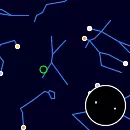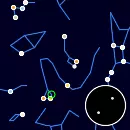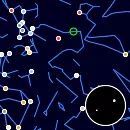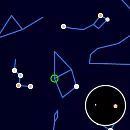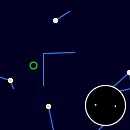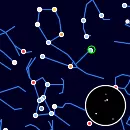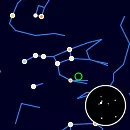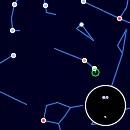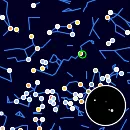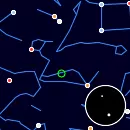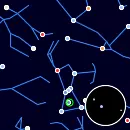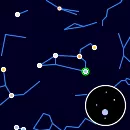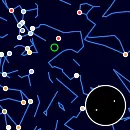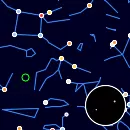Physical Double Stars Visible Tonight: True Binary Systems in the Night Sky
Sky Map
Celectial bearing and elevation at 16:05
Physical double stars are true binary systems, where two stars are gravitationally bound and orbit a common center of mass. These systems offer insights into stellar dynamics and evolution. Well-known examples include Sirius A and B, the brightest star system in our sky, and Castor, a sextuple star system in the Gemini constellation.
08572+1519
Double Star
Double star system in the constellation Cancer with primary and secondary components of magnitudes 5.24 and 5.70, separated by 16.3 arcminutes.
04393+1555
Double Star
Double star system in the constellation Taurus with primary and secondary components of magnitudes 4.69 and 5.09, separated by 7.1 arcminutes.
17322+5511
Double Star
Double star system in the constellation Draco with primary and secondary components of magnitudes 4.87 and 4.90, separated by 1.2 arcminute.
03158-0849
Double Star
Double star system in the constellation Eridanus with primary and secondary components of magnitudes 4.82 and 6.19, separated by 16.7 arcminutes.
22497+6612
Triple Star System
Triple star system in the constellation Cepheus with primary and secondary components of magnitudes 3.61 and 6.50, separated by 16.7 arcminutes.
15330-0111
Double Star
Double star system in the constellation Serpens with primary and secondary components of magnitudes 5.62 and 8.61, separated by 16.7 arcminutes.
13251+2351
Double Star
Double star system in the constellation Coma Berenices with primary and secondary components of magnitudes 5.76 and 9.20, separated by 16.7 arcminutes.
03459+2433
Multiple Star System
6-star star system in the constellation Taurus with primary and secondary components of magnitudes 5.75 and 6.42, separated by 2.5 arcminutes.
11538+5342
Double Star
Double star system in the constellation Ursa Major with primary and secondary components of magnitudes 2.40 and 8.21, separated by 16.7 arcminutes.
10435+4612
Multiple Star System
8-star star system in the constellation Ursa Major with primary and secondary components of magnitudes 5.21 and 7.35, separated by 4.8 arcminutes.
01535+1918
Multiple Star System
5-star star system in the constellation Aries with primary and secondary components of magnitudes 4.52 and 4.58, separated by 8.9 arcseconds.
09205-0933
Multiple Star System
Quadruple star system in the constellation Hydra with primary and secondary components of magnitudes 4.91 and 7.03, separated by 3.8 arcminutes.
01496-1041
Double Star
Double star system in the constellation Cetus with primary and secondary components of magnitudes 4.69 and 6.81, separated by 3.1 arcminutes.
04598-1016
Double Star
Double star system in the constellation Eridanus with primary and secondary components of magnitudes 5.48 and 8.47, separated by 5 arcminutes.
05350-0600
Multiple Star System
Quadruple star system in the constellation Orion with primary and secondary components of magnitudes 4.70 and 5.51, separated by 35.8 arcseconds.
14298+0050
Double Star
Double star system in the constellation Virgo with primary and secondary components of magnitudes 5.99 and 9.25, separated by 2.3 arcminutes.
04173+2035
Triple Star System
Triple star system in the constellation Taurus with primary and secondary components of magnitudes 4.95 and 9.63, separated by 3 arcminutes.
10084+1158
Multiple Star System
5-star star system in the constellation Leo with primary and secondary components of magnitudes 1.40 and 8.24, separated by 2.8 arcminutes.
04116-2021
Double Star
Double star system in the constellation Eridanus with primary and secondary components of magnitudes 5.82 and 7.68, separated by 1 arcminute.
23473-1155
Double Star
Double star system in the constellation Aquarius with primary and secondary components of magnitudes 5.70 and 9.70, separated by 2.5 arcminutes.

